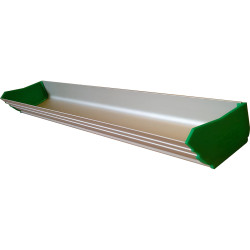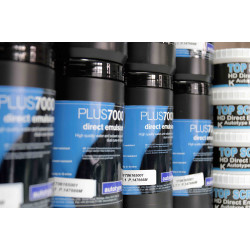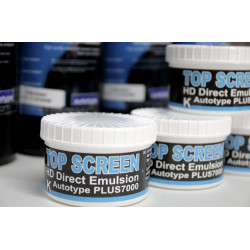Screen Printing Emulsion – The Key to Sharp and Detailed Prints
Let's talk about the unsung hero of screen printing - the emulsion. This sticky, light-sensitive liquid is what stands between you and a ruined batch of shirts. I've been printing for over a decade, and I can tell you - your emulsion choice makes or breaks your prints. It's not just about coating screens; it's about creating perfect stencils that capture every detail of your design, whether you're working on fabric, paper, or other materials.
Why Use Screen Printing Emulsion?
When I first started, I thought any emulsion would do. Boy, was I wrong. A quality emulsion is like a good pair of shoes - it supports you through the long haul. Here's what proper emulsion brings to your print shop:
1. Sharp and Precise Designs
Remember that time you tried printing fine text and it came out looking like abstract art? That's what happens with bad emulsion. The right formula holds those tiny details like a champ - whether it's hair-thin lines or delicate halftones.
2. Strong Durability for Long Print Runs
There's nothing worse than your stencil breaking down mid-production. I learned this the hard way during a 500-piece order. That's why I swear by this professional-grade emulsion - it withstands even the longest print sessions without flaking.
3. Compatibility with Different Inks and Exposure Methods
Not all emulsions play nice with all inks. Plastisol? Water-based? Discharge? Each has its perfect match. And let's not forget exposure - whether you're using an old-school halogen unit or a fancy LED setup, there's an emulsion formulated specifically for your light source.
4. Easy Application and Reclaiming
Ever spent an hour scrubbing emulsion out of a screen? I have. The good news? Modern emulsions coat evenly and wash out completely (when you do it right). Pro tip: Invest in a good scoop coater - it makes all the difference.
Types of Screen Printing Emulsion
Choosing emulsion isn't one-size-fits-all. Here's the breakdown from my experience:
Diazo Emulsion
- The training wheels of emulsions - forgiving for beginners
- Requires mixing (think: making pancake batter)
- Longer exposure times but worth the wait
- Works with most ink types - my safety net
Photopolymer (SBQ) Emulsion
- For when you're in a hurry - exposes crazy fast
- No mixing needed - straight from the jar
- My go-to for plastisol jobs with tight deadlines
Dual-Cure Emulsion
- The best of both worlds - like a hybrid car
- Handles any ink you throw at it
- What I use for important jobs that can't fail
How to Use Screen Printing Emulsion for Best Results
- Coating the Screen - Imagine spreading Nutella evenly on toast. Too thick and it's a mess, too thin and you're hungry. Same principle.
- Drying - Dark, dust-free, and dry. I use a modified closet with a dehumidifier. Bathrooms are emulsion killers.
- Exposure - That "recommended" time? Probably wrong. Do test strips - they've saved me countless ruined screens.
- Rinsing and Developing - Start gentle. I've blasted away details more times than I'd like to admit.
- Printing - The moment of truth. Properly exposed screens make this step a breeze.
- Reclaiming - Don't skimp on reclaim chemicals. The cheap stuff will have you scrubbing for hours.
Get the Best Screen Printing Emulsion for Your Projects
Whether you're printing garage band tees or running a commercial shop, your emulsion choice matters more than you think. After burning through countless screens (literally), I've learned that quality emulsion pays for itself in saved time and perfect prints. The right formula becomes an extension of your printing process - you'll wonder how you ever worked without it.
Screen Printing Ink – The Key to Bold and Long-Lasting Prints
Ink is where personality meets fabric. Plastisol is my reliable workhorse, while water-based inks give that vintage softness customers love. And discharge? Magic on dark fabrics, though the smell will clear your sinuses.
Direct Emulsion – The Foundation for Sharp and Durable Screen Prints
I switched to direct emulsion five years ago and never looked back. No more fiddling with films - just consistent, controllable results every time. It's like upgrading from a bicycle to a sports car for your screens.
















